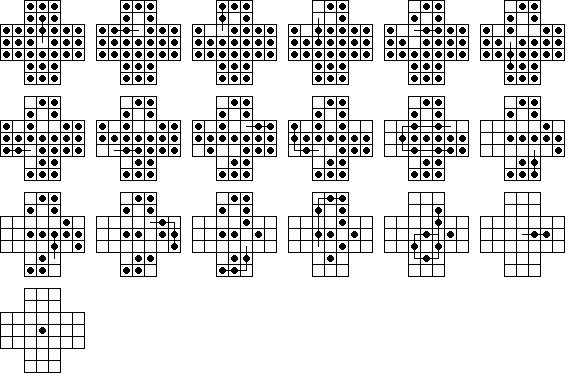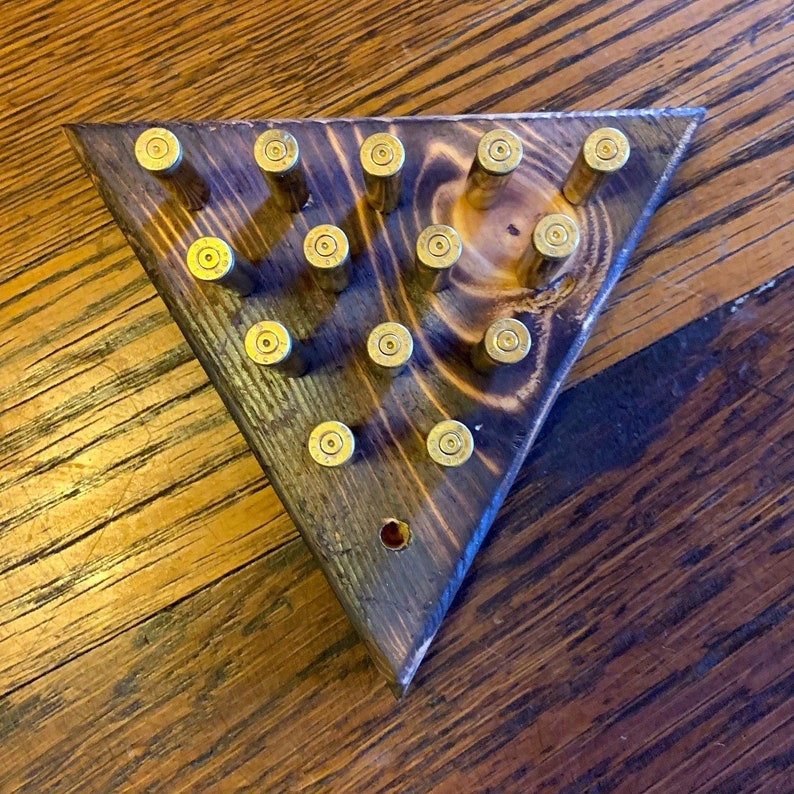

This is easily seen as follows, by an argument from Hans Zantema. There is no solution to the European board with the initial hole centrally located, if only orthogonal moves are permitted. On the English board the equivalent alternative games are to start with a hole and end with a peg at the same position.

This mirror image notation is used, amongst other reasons, since on the European board, one set of alternative games is to start with a hole at some position and to end with a single peg in its mirrored position. There are many different solutions to the standard problem, and one notation used to describe them assigns letters to the holes: Many people never manage to solve the problem. It is very easy to go wrong and find you have two or three widely spaced lone pegs. On an English board, the first three moves might be: Thus valid moves in each of the four orthogonal directions are: * * o → ¤ o * Jump to right A green ¤ is the hole the current peg moved from a red * is the final position of that peg, a red o is the hole of the peg that was jumped and removed. In the diagrams which follow, * indicates a peg in a hole, * emboldened indicates the peg to be moved, and o indicates an empty hole. The objective is, making valid moves, to empty the entire board except for a solitary peg in the central hole.Ī valid move is to jump a peg orthogonally over an adjacent peg into a hole two positions away and then to remove the jumped peg. The standard game fills the entire board with pegs except for the central hole. Several works of art from that time show peg solitaire boards, demonstrating that the game was highly fashionable. The first evidence of the game can be traced back to the court of Louis XIV, and the specific date of 1697, with an engraving made that year by Claude Auguste Berey of Anne de Rohan-Chabot, Princess of Soubise, with the puzzle by her side. In other sources, the invention of the game is attributed to the Native Americans-there is also no evidence to support this. He believes that the colorful tale is fiction, yet it persists. The first reference to this story appeared in 1810, more than a hundred years after the alleged event. John Beasley (author of "The Ins and Outs of Peg Solitaire") has extensively searched for evidence to support this, and has found it lacking. It is also referred to as Brainvita (especially in India).Īccording to a popular story, the game was invented by a French aristocrat in the 17th century, when incarcerated in the Bastille, explaining the game's less common name Solo Noble.

The game is known simply as Solitaire in the United Kingdom where the card games are called Patience. Some sets use marbles in a board with indentations. Peg solitaire is a board game for one player involving movement of pegs on a board with holes. The Princess of Soubise playing solitaire, 1697


 0 kommentar(er)
0 kommentar(er)
